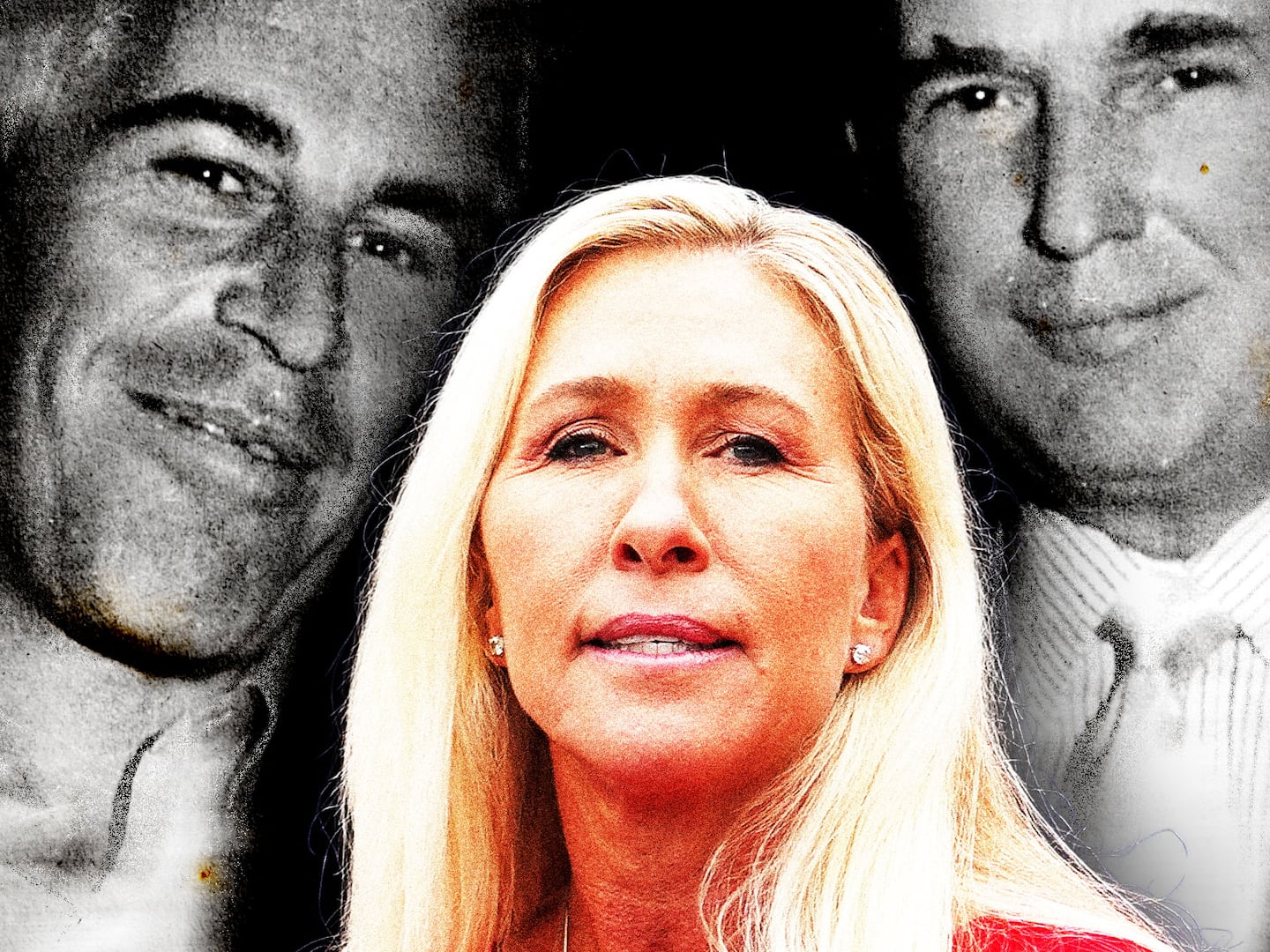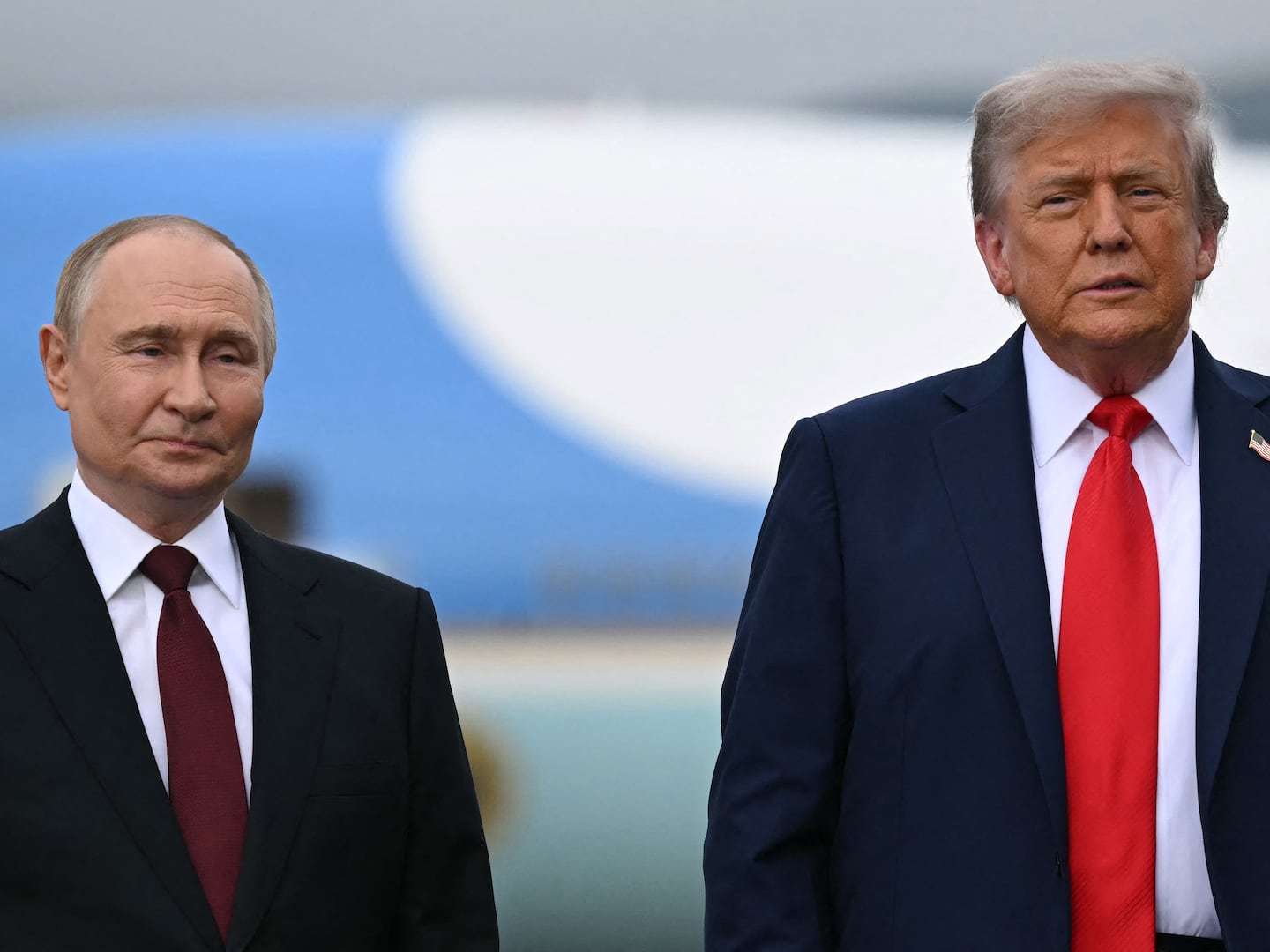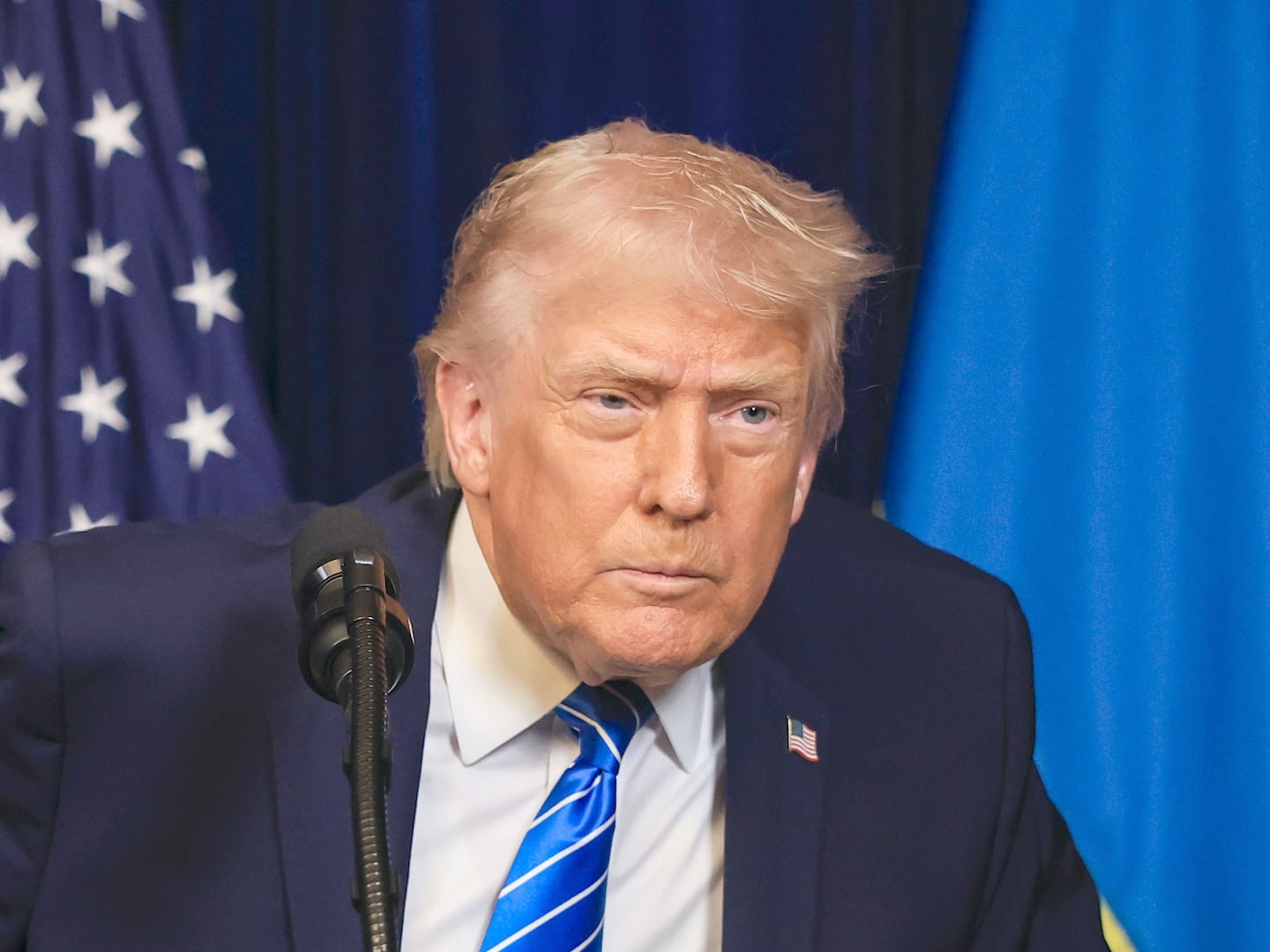The central contradiction in Donald Trump’s foreign policy, so far as a policy can be divined, has been reconciling his love and hatred for two American enemies. The love, of course, is for Vladimir Putin; a “killer,” sure, but then again, who isn’t? His hatred is for the Islamic Republic of Iran, which was quite rightly described by Defense Secretary James Mattis the other day as the “the single biggest state sponsor of terrorism in the world,” albeit one still enjoying close Russian air and tactical support and intelligence-sharing in Syria, as well as a healthy and growing arms trade with Moscow.
But not to worry. The Wall Street Journal reported this week that a budding Trumpist strategy is to try and cleave Putin away from the ayatollahs. “If there’s a wedge to be driven between Russia and Iran, we’re willing to explore that,” one unnamed administration official told the newspaper, which also relied on a number of unnamed European and Arab officials who confirmed that this was indeed the long view coming into focus in a White House where the new tenants still sometimes confer in the dark because they haven’t yet found all the light switches.
One well-known Russian foreign policy analyst, who asked to be quoted anonymously for this story, laughed at the idea that Moscow and Tehran could be broken up, least of all by this commander in chief. “I think Trump and Pence are out of their depth on Russia and Iran,” he told The Daily Beast. “Moscow will milk them for everything they’re worth.”
Putin, no surprise, is likely to welcome such an overture from Trump and even subtly encourage it. Not that he’s interested in a good-faith negotiation about swapping allies in his own peculiar war on terror. It’s just that he’s always fond of buying time, extracting concessions and undercutting American interests. So quixotic American efforts to get him to stop are welcome. (Proof of concept: the so-called reset in bilateral relations during the first Obama term, which Republicans excoriated as a mug’s deal before, it seems, forgetting their assessment of the mugger eight years later.) Additionally, Putin and Supreme Leader Ayatollah Ali Khamenei also have a common objective in seeing NATO destroyed and the European Union broken up. But they don’t even need to bargain with Trump for those goals; his many statements and actions show he shares them already.
Any substantive deal winning Putin away from his Persian embrace would almost certainly entail the lifting of all U.S. sanctions on Russia for the invasion and occupation of Ukraine, plus formally recognizing Crimea as sovereign Russian territory. Such a diplomatic volte-face would put Washington in violation of international law and make it a pariah among Western liberal democracies, or what’s left of them.
Moreover, Iran is the primary ground force in Syria, meaning that whether the Kremlin likes it or not, its military bases and intelligence assets are all at the mercy of Iran’s janissaries. “We are toast without Hezbollah,” the analyst said matter-of-factly, noting that the Russians are currently trying to “train and equip two Moscow-controlled Syrian Coastal Divisions.” Even assuming these were to come into some semblance of professional existence, they would still be woefully insufficient to hold all the strategic ground retaken from Syrian rebels in the last two years. Other Russian military analysts acidly agree that Assad’s army is barely a paper kitten at this point.
The extent to which Putin and Khamenei’s “facts on the ground” have grown codependent has been outlined in detailed by Paul Bucala, an Iran expert at the conservative American Enterprise Institute (PDF). He, too, concludes that “any U.S. appeasement effort to persuade Russia to abandon Iran in Syria will ultimately be unsuccessful.” His evidence is arrayed on the Syrian battlefield.
In the recent campaign to recapture rebel-held east Aleppo, he found, Iran deployed “thousands of soldiers from across its military branches over a 15-month operation,” including from its conventional military, or Artesh, its Basij paramilitary force, and its Islamic Revolutionary Guards Corps Ground Forces and Quds Force, the latter being the foreign expeditionary arm headed by the hardest working man in show business, Maj. Gen. Qassem Soleimani.
The Quds Force is currently a U.S.-designated terrorist entity; Trump is strongly considering that designation for the IRGC as writ large. Perhaps its best non-Persian subsidiary is Lebanese Hezbollah, another U.S.-designated terror group, which, along with the IRGC, has been training and arming various Afghan and Pakistani and Iraqi Shia militias in northern Syria, which have now been joined by a smaller contingent of Russian Special Forces.
This veritable Benetton advertisement for foreign fighters was intended to compensate for the shortfall in combat-ready Syrian regime soldiers. That it did. The retaking of Aleppo was credited by IRGC Major General Yahya Rahim Safavi, the senior military adviser to the supreme leader, as the spadework of “the Iran-Russia-Syria-Hezbollah coalition.” Safavi wasn’t posturing in his prioritization of the two stars in that constellation.
The least remarked-upon aspect of Russia’s intervention in the Syrian war, which began in September 2015 under the pretext of fighting ISIS (in reality, most of the bombs dropped have been on civilians or anti-ISIS rebels) has been its tutorial role. Iran fights much better now, thanks to Russia.
“High-ranking IRGC Ground Forces officers served as senior advisers in Iran’s military involvement in Syria since at least the middle of 2012, but their involvement was limited to a senior Train, Advise, and Assist (TAA) capacity,” Bucala writes. Their casualties spiked after Russia entered the fray, but only because Iran took that opportunity to send in forces whose remit wasn’t limited to training, advising, and assisting but to engaged in active combat duty. This is likely because state-of-the-art, Russian-manned Sukhois and MiGs, they felt, were felt to be a safer canopy than Syrian-piloted Soviet clunkers.
When Putin’s jets took off from Iran’s Shahid Nojeh Air Base in Hamedan province, Iranian Defense Minister Hossein Deghan assailed the Kremlin’s publicity of the event as “showing off,” adding to belief prevalent among diplomats that there is “daylight” between Moscow and Tehran. Lesser noticed, however, was how gratified one Iranian major general at Shahid Nojeh was that his pilots were now able to observe at close range how these aircraft were operated.
Better integrating ground and air combat à la russe is something of an Iranian fixation, according to Bucala and Genevieve Casagrande, a Russia expert at the Institute for the Study of War. The IRGC Ground Forces, they write, “created a new air assault unit in late February 2016, possibly influenced by observing Russian Special Forces operations around Aleppo earlier that year.” Now Iran wants Russia’s warplanes, too, specifically a fleet of Sukhoi-30 fighter-bombers, which, Bucala and Casagrande note, “would significantly reduce Tehran’s reliance on Russian (and, in Iraq, American) fixed-wing aviation to support its ground operations.”
Putin is also making Khamenei’s hold on power stronger at home. Russia’s delivery last fall of the S-300 anti-aircraft system to Iran—after years of on-again-off-again promises, lawsuits and recommitments pegged to U.S. pressure and now-lifted UN sanction—gave Iran a domestic air defense capability similar to what Russia has built up in Syria. In either theater, these missiles are meant primarily to deter one nation. Guess which one.
OK, but let’s say Trump did actively pick a fight with Iran, or simply responded in kind to another Iranian provocation of the sort Barack Obama used to downplay or ignore. If the U.S. and Iran did find themselves in a state of war in Syria, Iraq, Yemen, or elsewhere, where American forces could be targeted by the IRGC and vice versa, what would Russia do?
First it would deny that Iran was responsible for any wrongdoing, particularly if American soldiers were shot, bombed, or shelled in multidimensional conflict zones. It’d blame al Qaeda or ISIS. If the fighting were less plausibly deniable, say between flagged vessels in the Persian Gulf, Russia would gladly play its traditional role of peacemaker. It stepped up its military footprint and influence-peddling in the Middle East not to further the prospect of having America come calling but to replace America as the linchpin power for the conduct of all major regional business.
By risking a showdown with the mullahs, Trump is only bound to play further into Putin’s hands. Or, as the aforementioned Russian foreign policy analyst put it, “We would love to see the U.S. getting bogged down in a messy little conflict with Iran.”






